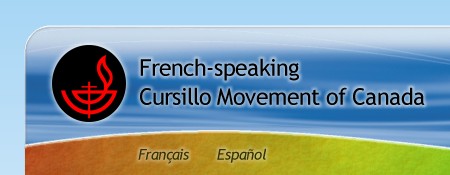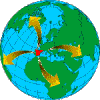
Cursillo Movement > History
Historical Overview of the Cursillo Movement
In brief >
The experience which spawned the Cursillo Movement took place in August 1944, in Cala Figuera, on the island of Mallorca (spanish island of the Mediteranean Sea).
Influence of the Catholic Action
 Starting from a one-week course named Cursillo for Leaders of Pilgrims offered by the Catholic Action movement to those who were preparing a pilgrimage to the Shrine of St James at Compostela, young Eduardo Bonnín* and a group of friends devised a method targeting a profound change in the day to day life of the communities rather than the preparation of a pilgrimage.
Starting from a one-week course named Cursillo for Leaders of Pilgrims offered by the Catholic Action movement to those who were preparing a pilgrimage to the Shrine of St James at Compostela, young Eduardo Bonnín* and a group of friends devised a method targeting a profound change in the day to day life of the communities rather than the preparation of a pilgrimage.
Eduardo Bonnin

In the summer of 1944, they led a first Three Day Cursillo for friends in a cottage in Cala Figuera. They repeated the experience many times, inviting mostly those they saw as born leaders, recruiting among non-practising as well as among the practising. Each Cursillo lead to the formation of small groups which kept on meeting for mutual support in prayer, study and action.
The January 7th 1949 Turning Point

Witnessing the wonderful results of their experience, Mgr. Juan Hervas, the island new bishop, decided to sustain it and to actively get involved. In January 1949 was held the first Cursillo officially sanctioned by the ecclesiastical authorities. From that point on, thanks to Mgr. Hervas, Cursillos were held at an accelerated pace - around thirty in his diocese during the first year - and the Movement was given a tremendous boost.
Fast growth
The growth of the Cursillo Movement has been phenomenal. As early as 1955 it migrated to South America and Mexico, and from there quickly spread to twenty (20) Spanish speaking countries. In 1961, it was introduced to the English speaking dioceses of North America.
The first French language Cursillo took place in Trois-Rivières, Québec, Canada in 1963. However no follow up to that weekend occured. It was after the Sherbrooke QC weekend in 1965 that the School of Leaders was established and hence became the origin of the "Mouvement des Cursillos Francophones du Canada"
A Universal Movement
 Twenty years after its foundation, the CM had reached all five continents. Today, Cursillo weekends are given in more than 60 countries, and approximately 1500 dioceses around the world.
Twenty years after its foundation, the CM had reached all five continents. Today, Cursillo weekends are given in more than 60 countries, and approximately 1500 dioceses around the world.
Many protestant communities have their own CM, namely Anglicans/Episcopalians who adopted it in its entirety. Others such as Methodists, Presbytarians and Lutherans have changed certain parts and named them differently but they have the same goal and follow the same methodology. Also, within the Catholic Churh, many movements have sprung from the CM.
Estimates state that some forty five million men and women of different races and beyond catholicism have attended a "three day cursillo"


